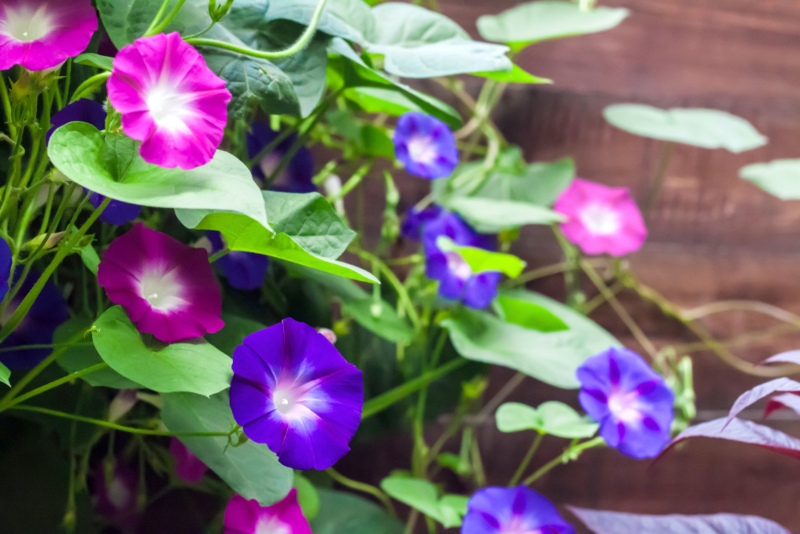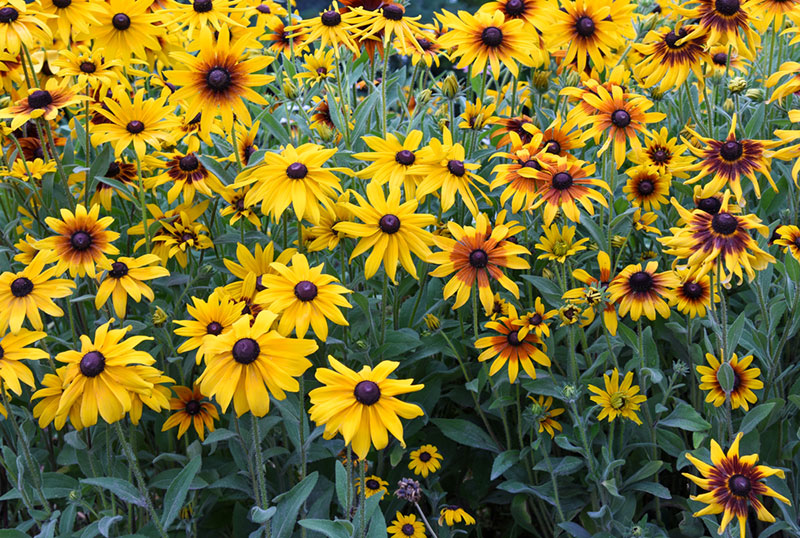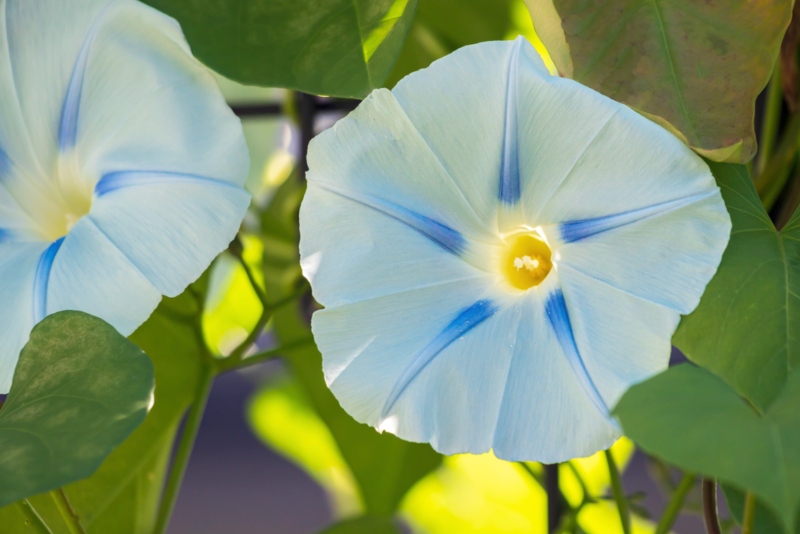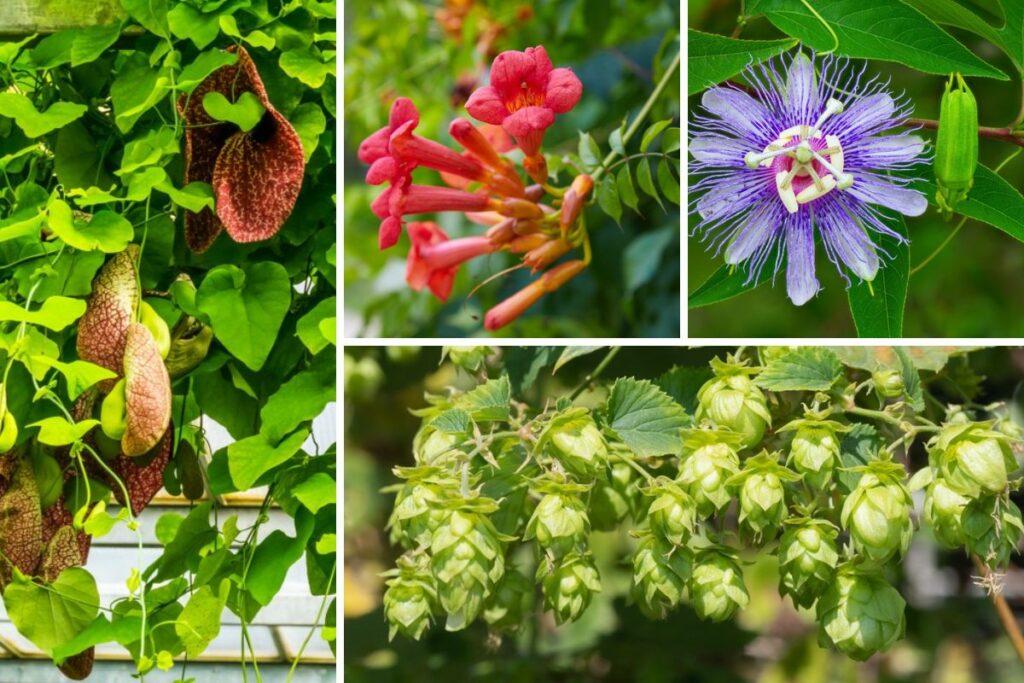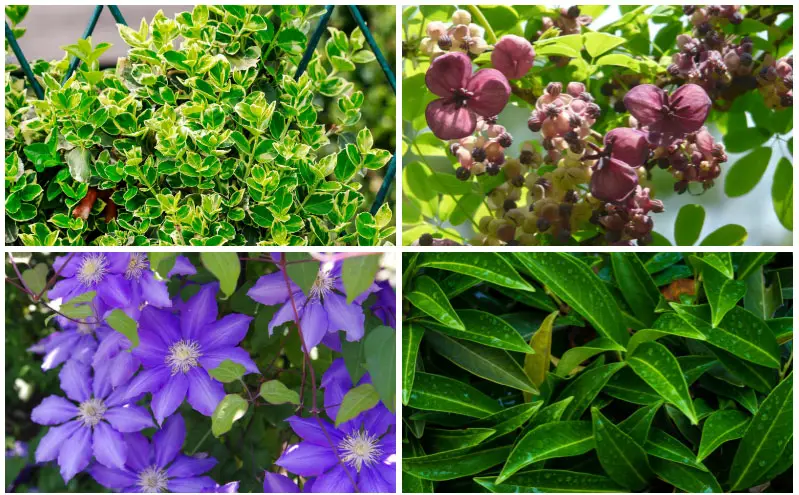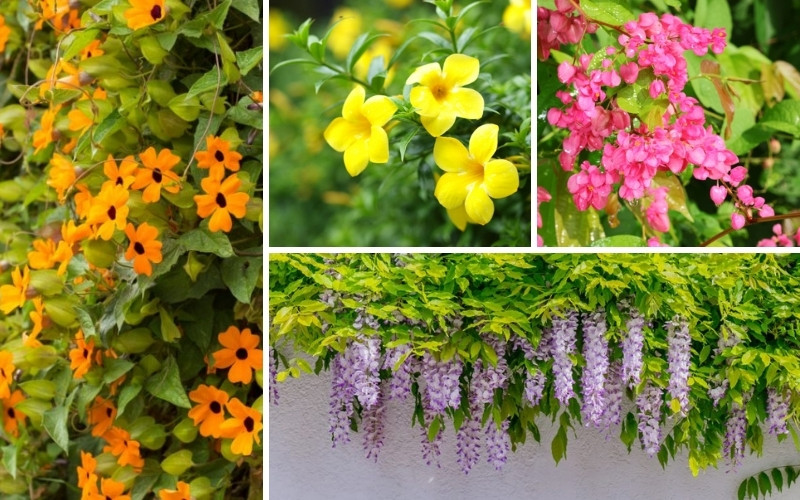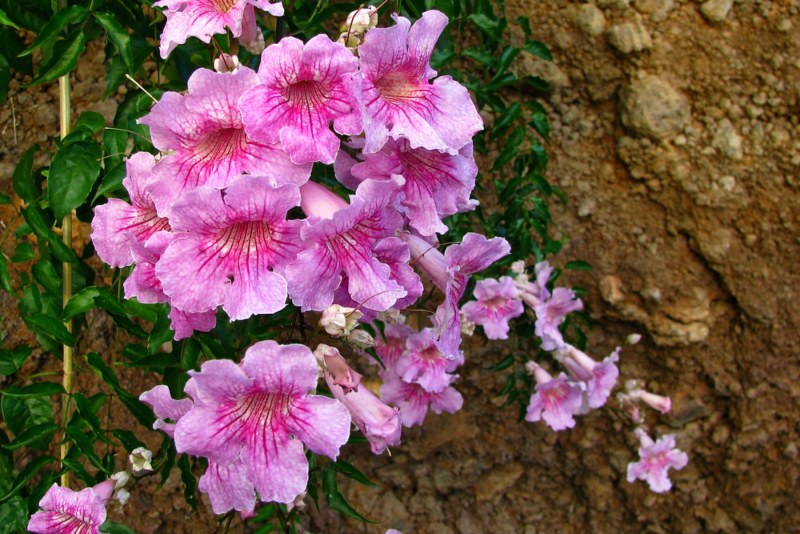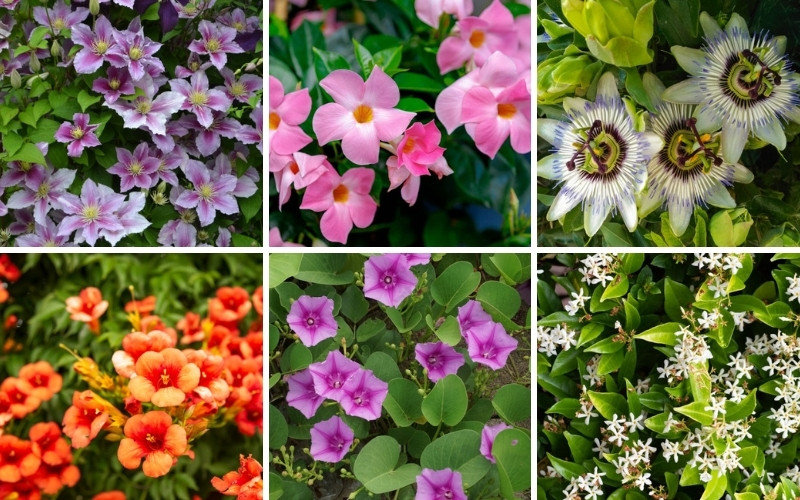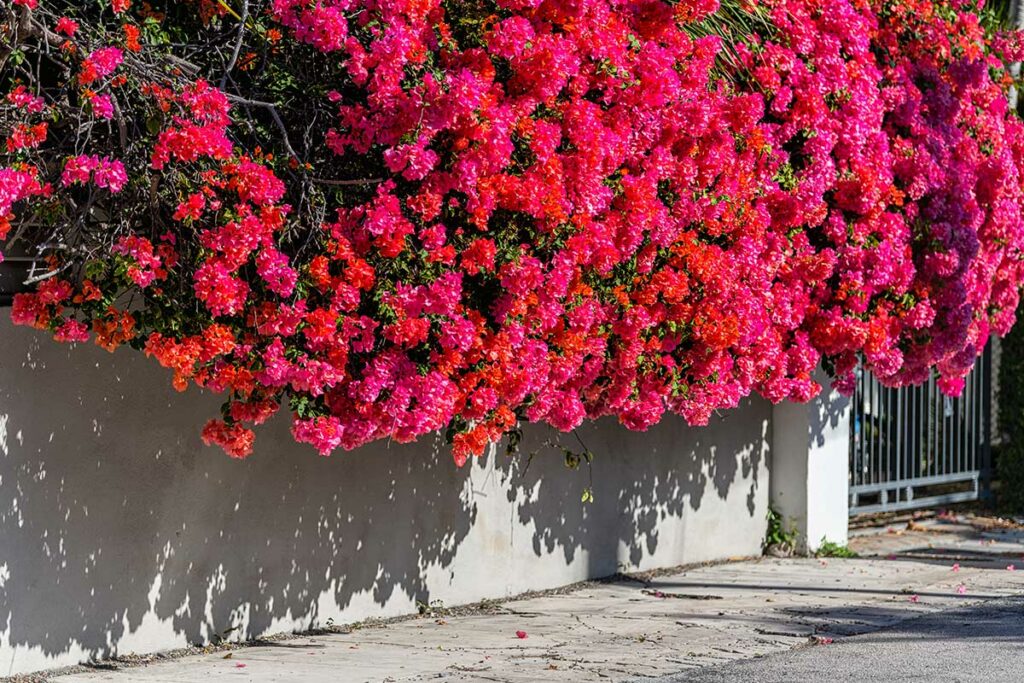Using flowering vines to cover your trellis or camouflage a garden wall is a great idea. Not only do they add a decorative element, but they also grace the surroundings with lovely fragrances.
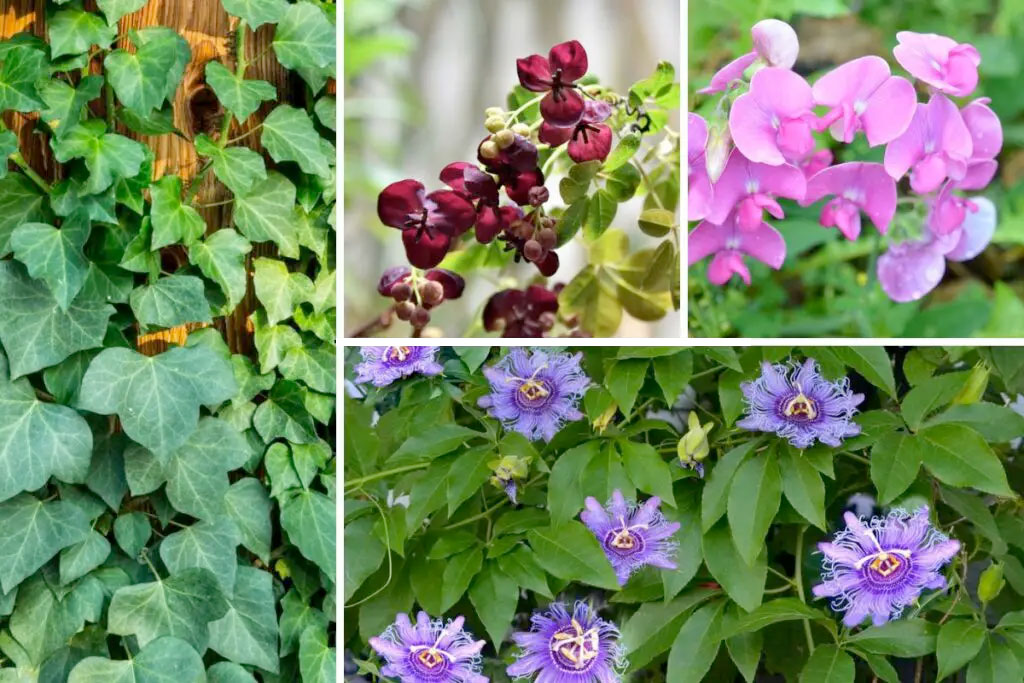
For each type of plant you choose to add to your garden space, there are specific requirements you should be aware of.
In this article, you’ll learn more about the 10 best Colorado flowering vines and their various needs.
1. Chocolate Vine (Akebia Quinata)
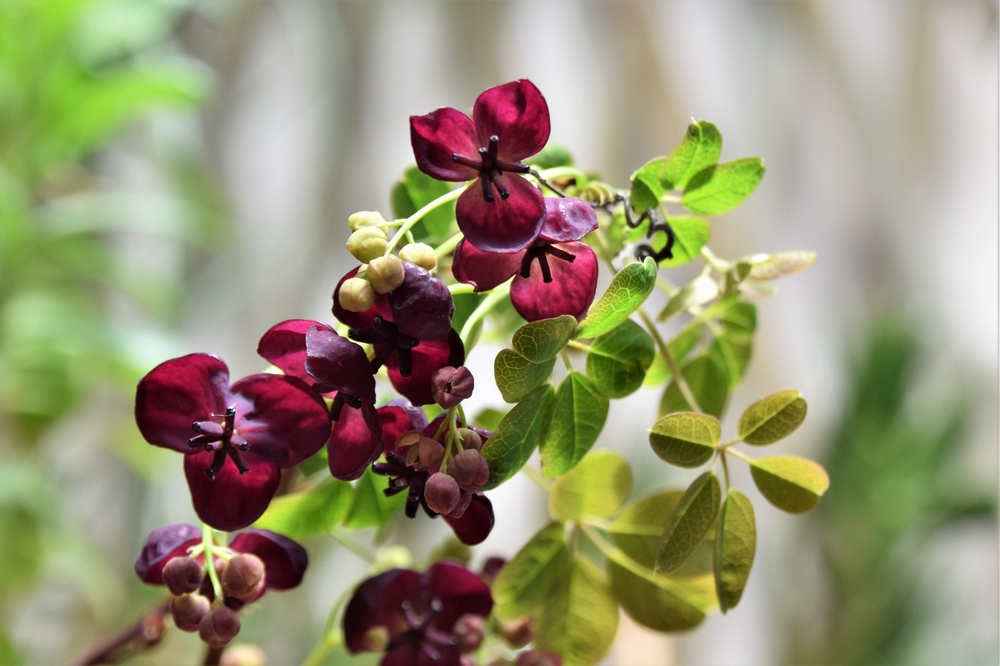
Belonging to the Lardizabalaceae family, this woody semi-evergreen twining vine is native to USDA zones 4 to 9.
Chocolate Vine is a vigorous grower that can reach about 40 feet long and has leaves consisting of five leaflet clusters.
In early spring, this vine blooms highly fragrant reddish-purple flowers that smell like vanilla. What’s more, it produces edible fruits similar to tapioca pudding in taste.
Soil: Clay, loamy, and sandy
Light: Full sun/partial shade/deep shade
Water: Regular weekly watering of one inch
2. Silver Lace Vine (Polygonum Aubertii)
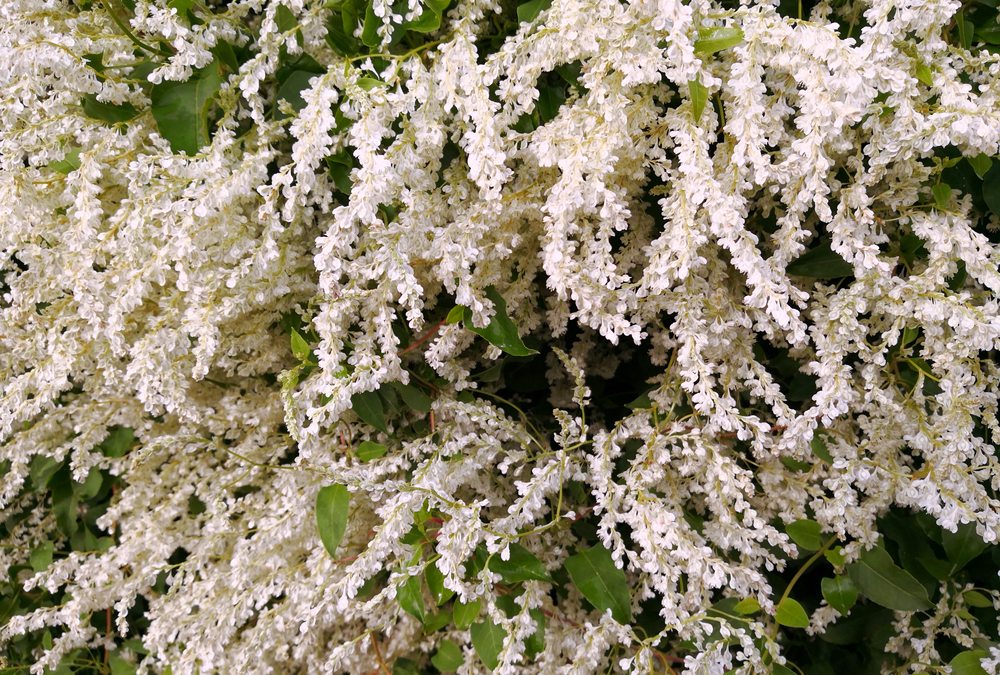
This is another vigorous-growing, almost invasive vine. Yet, it’s perfect for covering the trellis on your porch. Sometimes this twining vine grows to reach 30 feet long.
Silver Lace Vine thrives in hardiness zone 4–9 and produces silvery leaves with red-blushed tips. During summer, this vine blooms clusters of beautiful small white flowers.
Soil: Moist nutrient-rich soil (any type)
Light: Full sun/semi-shade/ shade
Water: Prefers damp soil without overwatering
3. Perennial Sweet Pea (Lathyrus Latifolius)
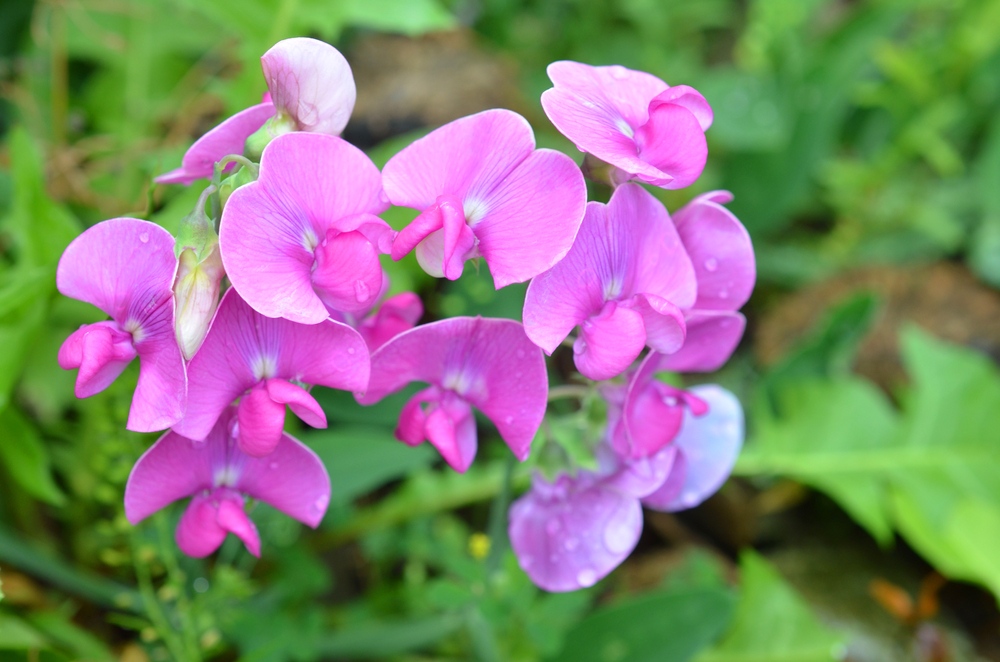
Perennial Sweet Pea is a climbing vine that can quickly reach eight feet high. It’s native to USDA zones 5–9 and is easily trainable to go over fences and arches.
Throughout the summer, this plant blooms clusters of gorgeous flowers in pink, white, and purple. Unlike the annual Sweet Pea, this species doesn’t have a strong scent.
Soil: Rich loamy soil with medium moisture
Light: Full sun/light shade
Water: Always keep the soil moist without overwatering
4. Maypop (Passiflora Incarnata)
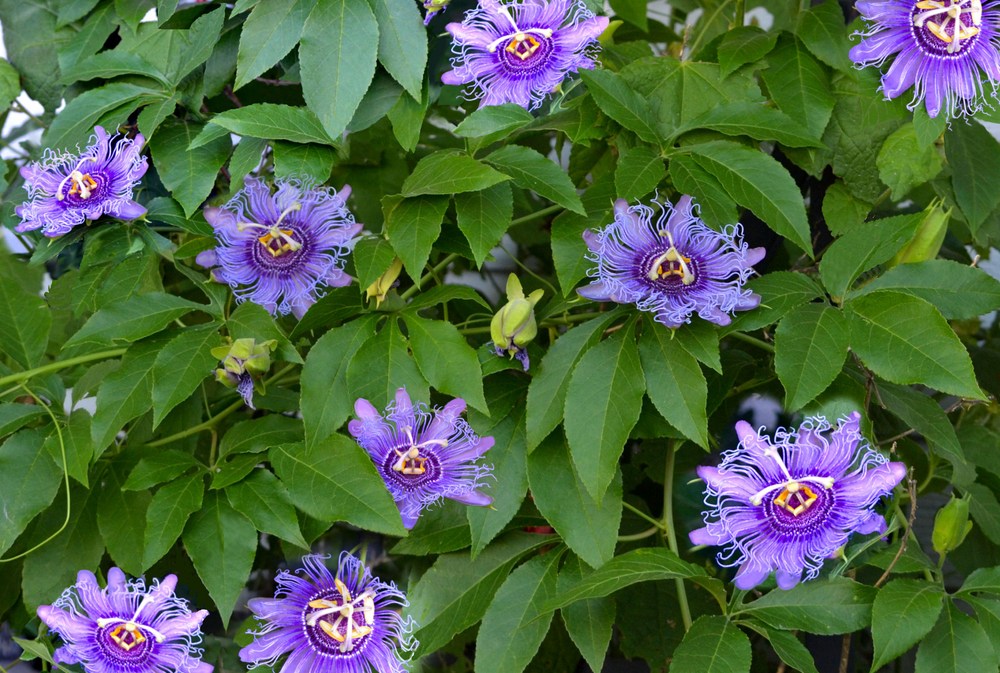
This herbaceous evergreen vine can grow to reach a length of up to 25 feet. Native to zones 5–9, Maypop has deciduous, trilobed dark-green leaves.
Through summer and fall, this plant blooms an exotic-looking purple flower that attracts all kinds of pollinators, especially butterflies.
What’s more, Maypop also grows orange-yellow edible berries providing winter food for the surrounding wildlife.
Soil: Any type of well-draining, moist soil
Light: Sun/partial shade
Water: One inch of weekly watering
5. Coral Honeysuckle (Lonicera Sempervirens)
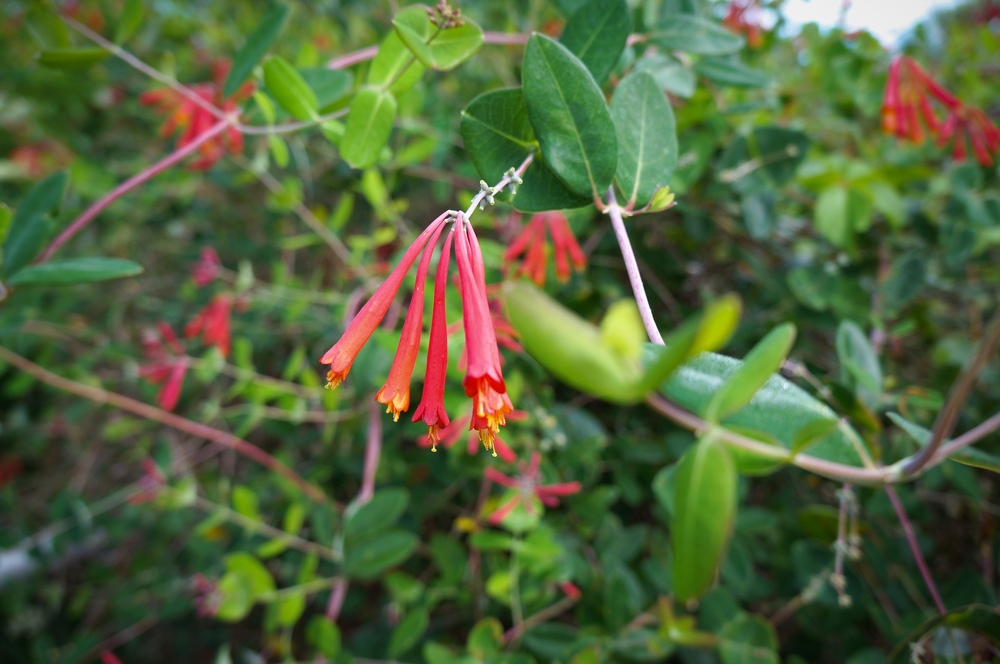
Coral Honeysuckle, also known as Trumpet Honeysuckle, got its name from the red trumpet-shaped flowers it produces.
This twining vine is native to USDA zones 4 to 9 and can grow up to 20 feet long.
Coral Honeysuckle has glossy green paired leaves and mostly flowers from March to June. At the end of its blooming season, the flowers mature into small bright red berries.
Soil: Well-draining, loamy soil
Light: Full sun/partial shade
Water: One inch of weekly watering
6. Chinese Wisteria (Wisteria Sinensis)
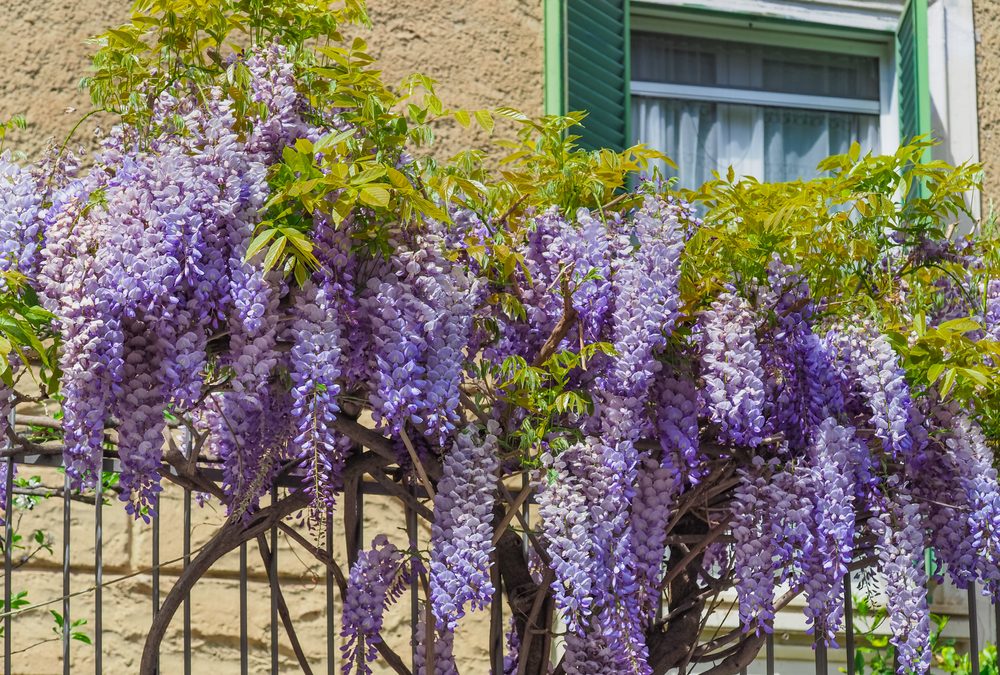
This is the ultimate plant for training to climb up structures like garden fences and pergolas. Flowering from May to June, Chinese Wisteria thrives in hardiness zone 5–8.
This twining perennial vine is a dazzling bloomer and can live for over 50 years, just like all Wisteria species.
Chinese Wisteria produces masses of droopy fragrant mauve flowers, followed by velvety seed pods that look like beans.
Soil: Medium moisture, well-draining, fertile soil
Light: Full sun/partial shade
Water: Two times per week until established
7. Wintercreeper (Euonymus Fortunei)
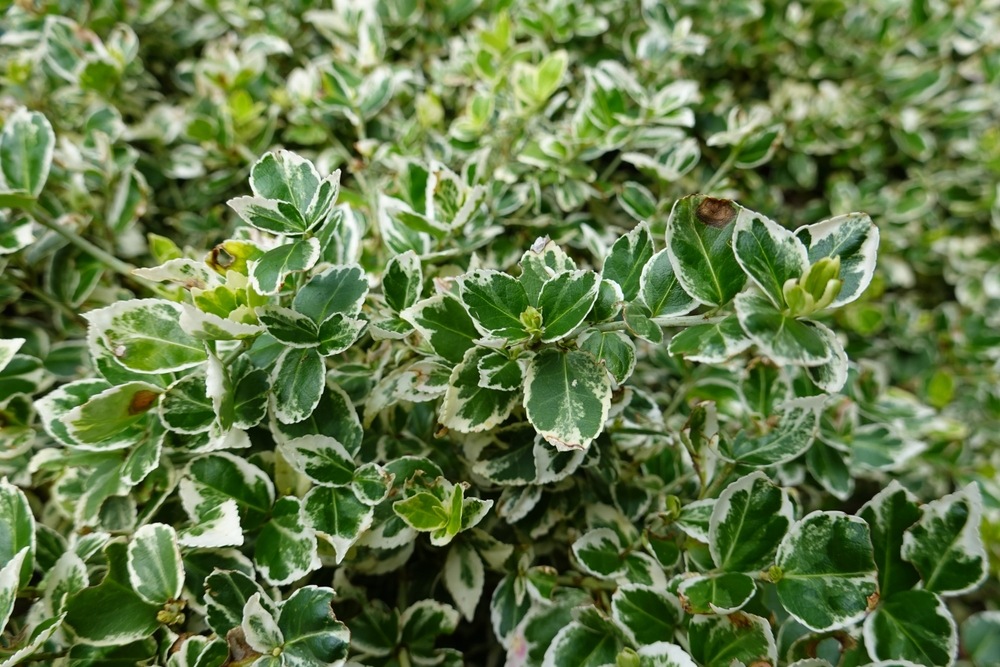
This evergreen vine can form thick trails of ground cover with its broad leaves. Although it’s a flowering type producing little greenish-white blooms, gardeners usually grow it for its foliage.
As a juvenile plant and with proper support, the Wintercreeper can climb up to reach 66 feet high. However, it stops growing once it matures.
Wintercreeper is native to hardiness zone 5 to 9. If not kept trimmed, this vine can become invasive.
Soil: Moist, well-draining, alkaline soil
Light: Full sun/partial shade
Water: Able to handle drought, water when the first three inches of soil dry out
8. Polish Spirit (Clematis Viticella)
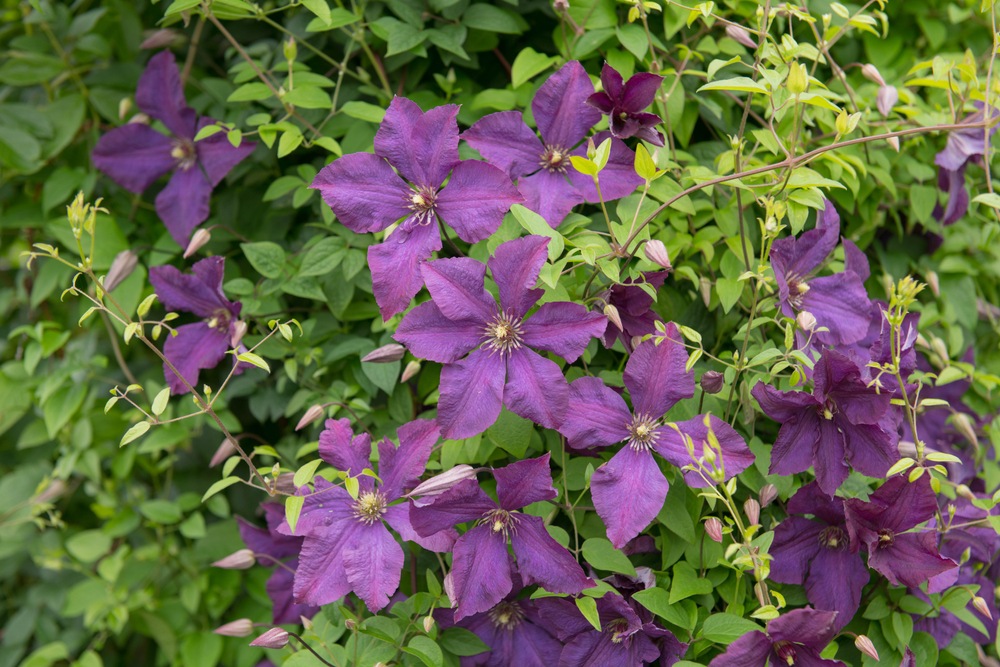
This deciduous climbing vine with pinnate leaves is known for its distinctive deep purple flowers appearing in mid-summer to late autumn.
Over time, these blooms lose their red hue and fade to a purplish-blue color.
Native to USDA hardiness zone 4–11, Polish Spirit is a perfect choice for a pergola cover. That’s because you can easily train it to climb various surfaces.
Polish Spirit also shows excellent resistance to clematis wilt and grows to reach about ten feet long.
Soil: Moist, well-draining soil
Light: Full sun/partial shade
Water: Water thoroughly when the first couple of inches of soil dry out
9. English Ivy (Hedera Helix)
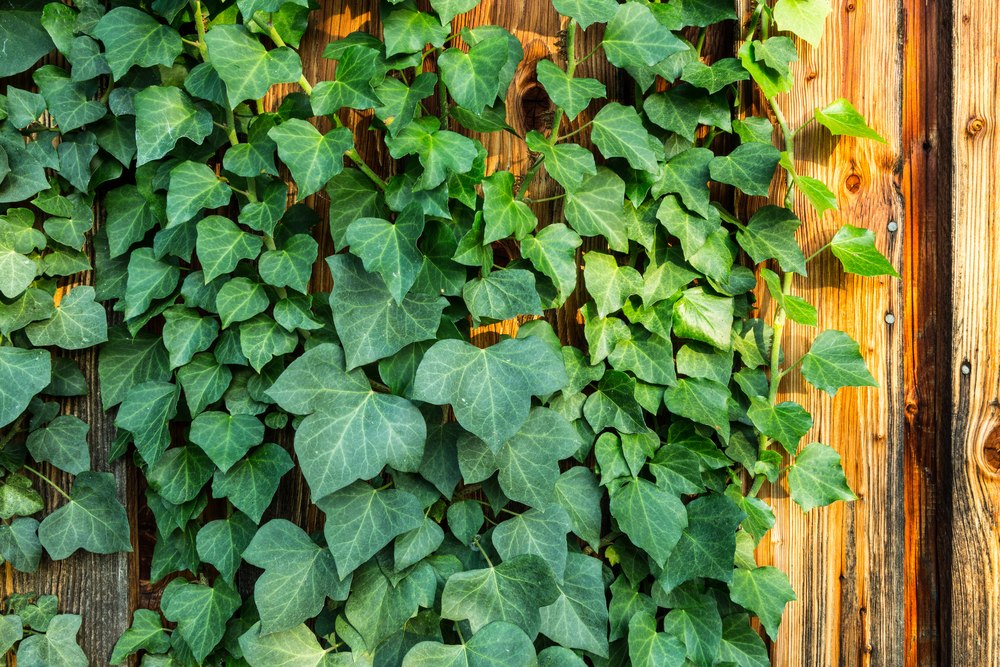
English Ivy is an evergreen, perennial woody vine that can spread horizontally to cover the ground or climb vertically up. With the help of its aerial roots, this plant can reach 80 feet high.
In many areas, English Ivy can be considered invasive because of its aggressive growing habits (hardy to zone 6 USDA).
Around fall time, it bears tiny greenish-white flowers. Yet, people usually grow it for the bushy green foliage.
That said, be careful when handling English Ivy, as it’s toxic to humans and pets.
Soil: Fertile, moist, well-draining soil
Light: Partial/full shade
Water: Avoid watering unless the soil is completely dry
10. Summer Grapes (Vitis Aestivalis)
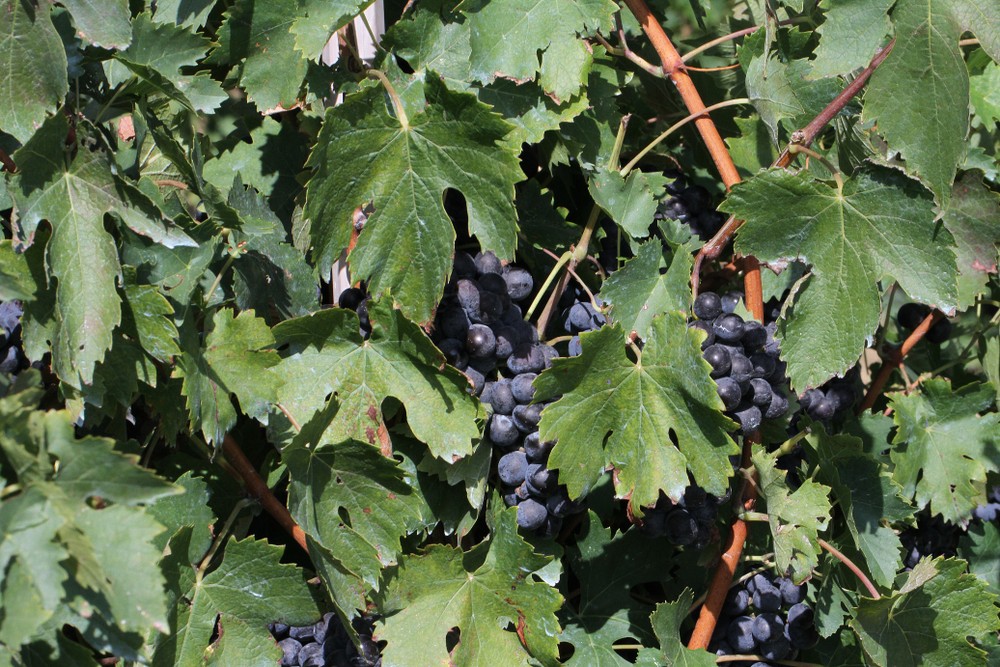
This type of vine is an enthusiast climber that can go up just about any tree with the help of the twining tendrils (over 30 feet high). It grows in hardiness zone 5–8.
Summer Grapes bloom around late spring and early summer, producing female, male, or perfect. The female flowers mature to become sweet 1/2 –¼ inches across berries.
Each berry contains two to four tiny seeds spreading around through the birds eating them.
Soil: Well-draining, loamy soil
Light: Full sun helps produce berries, while shade doesn’t
Water: Keep the soil moist but never overwater it
Conclusion
Reading about the 10 best Colorado flowering vines, you notice that most of them are easy to care for and don’t require much work.
Aside from keeping an eye out for toxic parts, you shouldn’t worry about regular watering or fertilizing.
Having a stunning flowering vine in your garden is just awaiting your decision.





